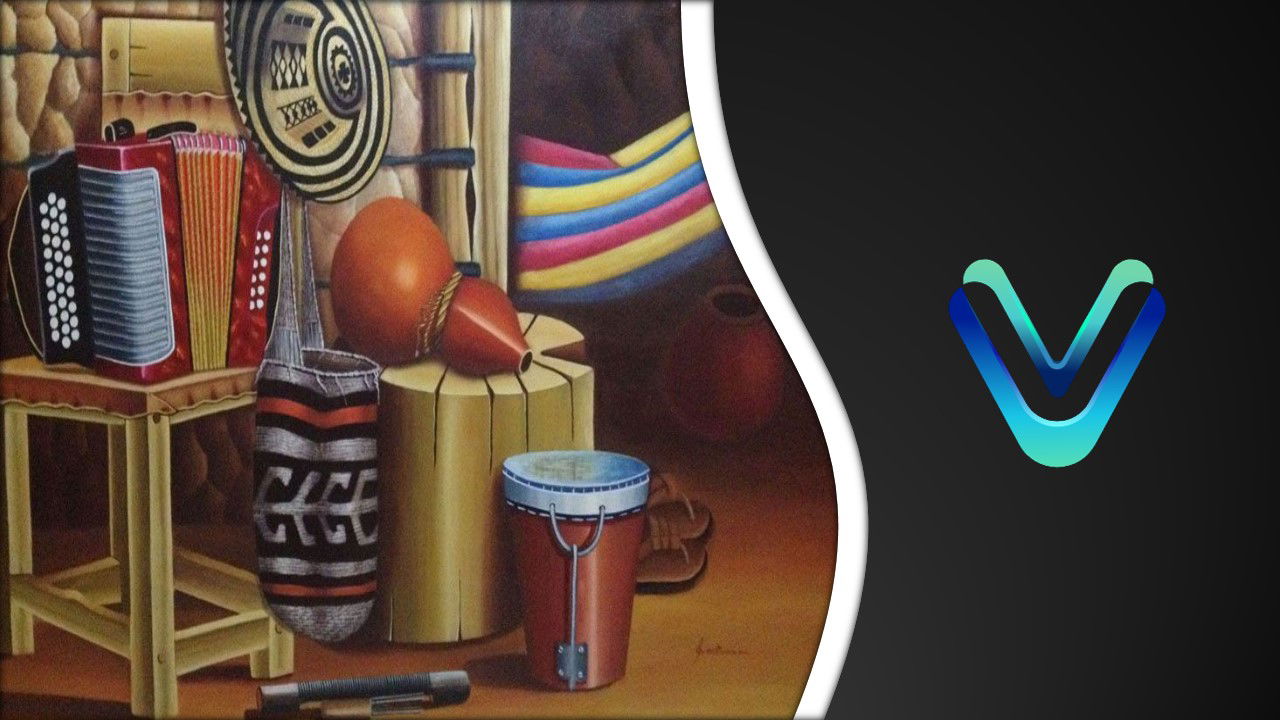Musical Genres and their History - El Vallenato

If there is something that we like more or equal to the History is the Music, our days can not begin or end without it, it is a companion that is there encouraging us in any activity we do, that is why it was born The Musical Genres and its History, a nice section where we combine where we can combine what we like and talk about it, because it is never too much to know the origin of certain things, today we will move to Colombia, this South American country is full of wonders and not only natural, nation just 647 kilometers from Bogota (Capital of Colombia) is Valledupar a city where our interesting history begins, this place is classified as the Cradle of Vallenato and we will understand why.

Like other South American countries, Colombia was colonized by the Europeans, exactly by the Spaniards in the year 1499, its name is in honor of Christopher Columbus, although he never visited it, with the arrival of these explorers, African slaves also began to arrive, in this way several cultures were somehow or another way joining in this beautiful country, music has always been a complement to the life of us humans, Regardless of the year or place, in this country the history was not very different from others, with the theme of music, let's remember that at that time, most of the musical themes were interpreted with the Guitar or Drum, but when the Accordion arrived, this instrument of German origin, definitely made the musical history of Colombia change radically and gave way to the birth of a musical genre (The Vallenato) that today is listened by millions of people inside and outside Colombia.
How was Vallenato born?
Historians say that in Valledupar there were several indigenous tribes, among them there were two called: "Chimilas and Tupes", both had a Cacique that everyone respected, they almost saw him as a God, his name was Upar, curiously it is from here that many attribute the name Valle de Upar or Valledupar and Vallenato, which in turn means: "Born of the Valley". It turns out that at that time to give news, to send a message it was necessary to hire farmers in the area, who knew very well each village and were willing to give great journeys to make known some news, these men to be more enjoyable trips took some instrument, guitar, guacharaca among others, to go singing while they arrived at their destination, they were accompanied by a cow, mule or a donkey. At that time not everyone had access to real coins, so it was decided to use the famous barter, I give you something valuable that I have, for some product that you have, and that is how the Accordion arrived to the Colombian coasts. The curious thing about this genre is that it also comes from the Spanish, because the structure of its verses, of its songs was based on those poems and songs that they sang in these Colombian lands. The Africans who lived in this country, joined in, and with their drums decided to sing to life, to narrate what they felt, that is why many experts agree that Vallenato emerged 300 years before the arrival of the Accordion to Colombia, but now this story gets better.
A man by the name of Francisco Moscote, who was a messenger, by the things of life managed to obtain an accordion and as he could he learned how to use it and how it complemented his songs, verses and poems, every time he arrived at a town square he placed the accordion correctly, started to play it and there he narrated the news, some personal anecdote or even tried to make a beautiful lady fall in love with him, who stopped to listen to what was so beautiful that it sounded. The accordion caused such a stir that many people longed for Francisco to arrive to listen to his songs and find out what was going on in the "world". The legends tell that one day he was riding his mule, playing his beautiful accordion, thinking about what he had seen today, when suddenly he ran into a man on that lonely road, the stranger challenged him to play that accordion, but what the great Francisco did not know was that the stranger was the Devil himself.

This is how this duel began, where not only was disputed who was the best accordion player but also Francisco's soul, when he saw himself lost, he decided to make a move that he did not know if he would lose to this evil being, he took a risk and began to play the Credo but the other way around. The Devil, seeing himself lost, had no choice but to retreat, but not before making this man a little scorched because he lit a palm tree where Francisco was resting from the terrible sun. It was at that precise moment when this event spread like wildfire through all the towns of Cesar (State or Department where Valledupar is located), and Francisco Moscote became known as Francisco el Hombre, he stopped being a simple messenger and became a great accordion player, and that is why many Vallenatologists agree that even though he was not the only accordion player that existed at that time, he was a pioneer in this musical genre.
How did Vallenato evolve?
When we talk about Vallenato, we talk about culture, we talk about history, magic and a whole country so rich and diverse, that undoubtedly motivate us to write a beautiful verse, however, taking up the question again, Vallenato began to evolve without a doubt, after that union was forged, which is still present today, for Vallenato to take that next step these instruments were needed:
Caja Vallenato - This instrument inherited from the African Culture is the one in charge of giving color to this divine genre, it is nothing more than a drum, which arrived with the African slaves, and fit perfectly with Vallenato.
The Guacharaca - This instrument is somewhat magical, because it was created for another purpose, it turns out that the Indians began to look for a way to imitate the sound of a bird very consumed by them called Guacharacas, and that is how they invented this, but when they saw that they could create music and rhythms with it, they decided to stop using it for hunting, and that is how the Guacharaca began to be part not only of Vallenato but also of other musical genres such as Merengue.
The Accordion - The protagonist of this beautiful genre, one of the youngest musical instruments in the world, its creation dates back to the XVIII century in Germany, however it was expanding all over the world, its characteristic sound, the rhythms that can be created with it makes it something unreal, magical, and that is why we see it present in Vallenato, Merengue and in Mexican Popular music.

The vallenato was welcomed by the most popular classes, by those people of the villages, the peasant that his daily life inspired him to sing, to compose what he saw, what he felt, that is why in every town square, there was an accordion player singing to his beloved, or telling a message of what was happening in another city or perhaps to report some terrible criminal. Among the streets of these rural towns you could hear the sound of the parrandas vallenatas, when these three instruments were united, you would wake up enjoying and having fun with good friends.
Like everything in life, when something new arises, not everyone saw with good eyes the creation of Vallenato, the High Class of the Society that made life in Colombia, saw this genre as something absurd without sense, and even used the word Vallenato to insult a group of people who suffered from a disease, however everything was changing, when in Valledupar around there in the twentieth century the high class of the city, decided to allow this genre to be heard in Valledupar Social Club, so many enjoyed listening to the great singers or as many would call them "Juglares del Vallenato" telling their stories, many just sat with a good glass of liquor, to listen to these interesting stories, it should be noted that at that time, Vallenato was rarely danced, it was then when many began to enjoy it as they should.
Such was the fame and followers that Vallenato obtained, that the local authorities decided to pay a great tribute, so in 1968 the former Governor of Cesar Alfonso Lopez, the musician and composer Rafael Escalona and journalist Consuelo Araujo, decided to create a Festival, which they decided to call: "Festival de la Leyenda Vallenata" which to this day continues to be held, an event where true talent is rewarded, where the best Singers and Accordion player duel, to demonstrate their passion for Vallenato and their great skills. That is why every April 29th Valledupar stops, and opens its doors to Colombians and foreigners, who come to delight and enjoy the best talents that the valley has to give.

How does Vallenato express itself?
A rather curious question, it turns out that Vallenato has four ways of expressing itself:
Piquería - A great way where the accordion players duel and demonstrate their great skills in handling the accordion, it depends on that for the audience with their applause to say who is the winner.
La Puya - This way of expressing oneself is softer than the piquería, because here the choirs are used, who in turn have the task of responding to the singer, without a doubt this way is more rhythmic.
The Merengue - This is ideal to use a totally different connotation even though it has that rhythmic form as the puya, in the Merengue we use a connotation of sensuality, eroticism, its origin is purely African and although many may think that it is related to the merengue of the Dominican Republic, we confess that they have nothing to do, they are totally different.
The Paseo - One of the most used nowadays, and even many say that it is the most commercial, if we listen to a current vallenato, we will see that it is based on this form of expression, it emerged in the 90's with the new prospects of Vallenato, and it is there where it is given the name of the New Vallenato Wave. Some agree that the Paseo has similarities with the Waltz, because its rhythm lends itself to dance.
Vallenato is magic, it is a genre that has captivated many of us, a genre that we can listen to when we are sad or happy, no matter how old you are, much less what languages you speak, when you hear an accordion playing, and you feel how the other instruments are working, you know that it is a genre that we can easily leave, That is why in Virtual Variety we take the task of talking about it today, while we are writing these words to close, sounds in our player a vallenata song that transports us to Valledupar, to that time where those troubadours despite not knowing how to write or read, many were happy with their songs and improvisations where they orally captured their experiences and occupations. As the Zuleta Brothers would say in their song, "Valledupar is a Land of Singers, where the Acordeones know how to cry and laugh". We hope you enjoy this pleasant reading, which we made with much affection, letting ourselves be carried away by these songs that make our days happy, happy tomorrow.

Other articles of interest:
Follow us on
Twitter » @Virtual_Variety
Telegram » @Virtual_Variety
Noise » @Virtual_Variety




